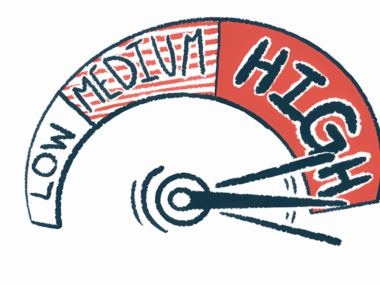Plasma Exchange Plus IVIG May Ease MG Symptoms, Boost Immunity
Written by |
Plasma exchange combined with intravenous, or into-the-vein, immunoglobulin (IVIG) appears to be safe, and better than plasma therapy alone at easing the symptoms of myasthenia gravis (MG) and boosting the immunity of patients, a study suggests.
These findings offer what researchers called a “reference for clinical decision-making” — particularly in treating a myasthenic crisis, or a worsening of muscle weakness that results in respiratory failure.
“The treatment of [myasthenia gravis crisis] with [plasma exchange] combined with immunoglobulin can … effectively enhance the consciousness and immune function of patients,” the team wrote.
The study, “Effects of Plasma Exchange Combined with Immunoglobulin Therapy on Consciousness, Immune Function, and Prognosis in Patients with Myasthenia Gravis Crisis: A Prospective Randomized Test,” was published in the journal Computational and Mathematical Methods in Medicine.
MG occurs when the immune system produces antibodies that attack the points where nerve and muscle cells meet and communicate. When communication between the two cell types is lost, episodes of muscle weakness — usually involving specific muscle groups — may occur.
When this happens to the muscles that support breathing, a myasthenic crisis may be triggered. During such crises, patients may have to be admitted to the hospital and placed on a ventilator to aid breathing until their respiratory muscles become strong enough again.
While there is no cure for MG, some treatments may help manage its symptoms.
One such therapy is plasma exchange, also known as plasmapheresis. It works by separating potentially damaging plasma — the yellowish fluid that carries harmful antibodies around the body — from the blood and its cells, and returning a healthy plasma substitute in its place.
Another treatment is IVIG, a pool of immune proteins made from donated plasma that is usually given straight into the bloodstream via a vein. The immunoglobulin pool helps decrease the immune system’s attack on nerve and muscle cells.
Researchers combine plasma exchange, IVIG
Researchers in China now sought to determine whether plasma exchange and IVIG could be used together to treat patients with MG. The team evaluated the safety and effectiveness of such a combination therapy compared with plasma exchange alone.
The study included 60 patients, half of whom received only plasma exchange, once every two days. This group was comprised of 15 men and 15 women, with an average age of 45.8. The other 30 patients — 16 men and 15 women, with a mean age of 45.1 — received plasma exchange plus IVIG pulse therapy (0.4 grams per kilogram of body weight per day) for five days in a row.
All of the patients’ symptoms were monitored using a clinical scoring tool that evaluated drooping of the upper eyelids (ptosis) and its duration, horizontal eye movement and double vision (diplopia), facial muscle weakness, and fatigue of the upper and lower limbs. This tool also assessed chewing, swallowing, and breathing. Each item received a score of zero to four points, adding up to a maximum possible score of 60 points. Higher scores reflected worse symptoms.
Before treatment, the mean clinical score was 33.7 points in the plasma exchange group and 33.5 points in the plasma exchange plus IVIG group. After treatment with plasma exchange, the mean clinical score remained nearly identical, at 33.2 points, in the plasma exchange group. But patients who received plasma exchange plus IVIG saw their mean clinical score drop significantly, to 23.1 points.
To understand whether the treatment was effective, researchers calculated the proportion of patients who saw their clinical score improve by 25% or more. This was seen in 83.3% of the patients in the plasma exchange group, and in all of those who received plasma exchange plus IVIG.
Patients who experience a myasthenic crisis may lose consciousness and enter a comatose state. When researchers watched for differences in the number of patients who remained conscious, they found there were fewer in the plasma exchange group (15 vs. 27). In turn, there were more patients with brain fog (10 vs. 3) or in a coma (5 vs. 0) in the plasma exchange group.
Blood testing revealed that patients who received plasma exchange alone had lower levels of immunoglobulins (antibodies) than those who were on plasma exchange plus IVIG. Immunoglobulins are part of the immune response against potential threats that the body fights off. This means that plasma exchange plus IVIG may boost the immunity of patients with MG, according to the team.
Such a combination therapy “can not only effectively enhance the consciousness and immune function of patients but also effectively promote the prognosis,” the researchers wrote.
This combination also appears to be safe. Patients in the plasma exchange group reported five adverse events, or side effects. In two cases, these were related to the skin, while one case each was associated with the digestive tract, the nervous system, and the body in general. In the other group, there were fewer side effects, with one patient reporting a skin reaction.







Leave a comment
Fill in the required fields to post. Your email address will not be published.